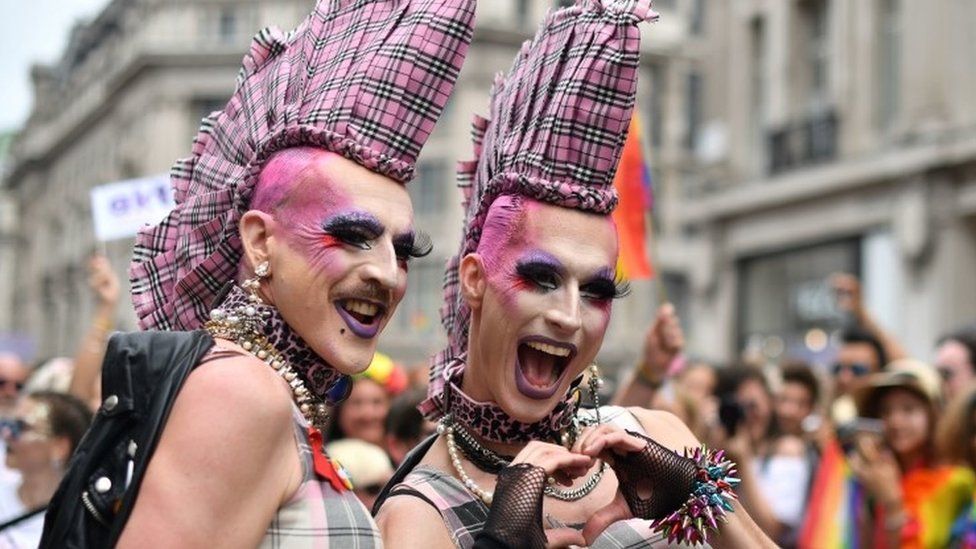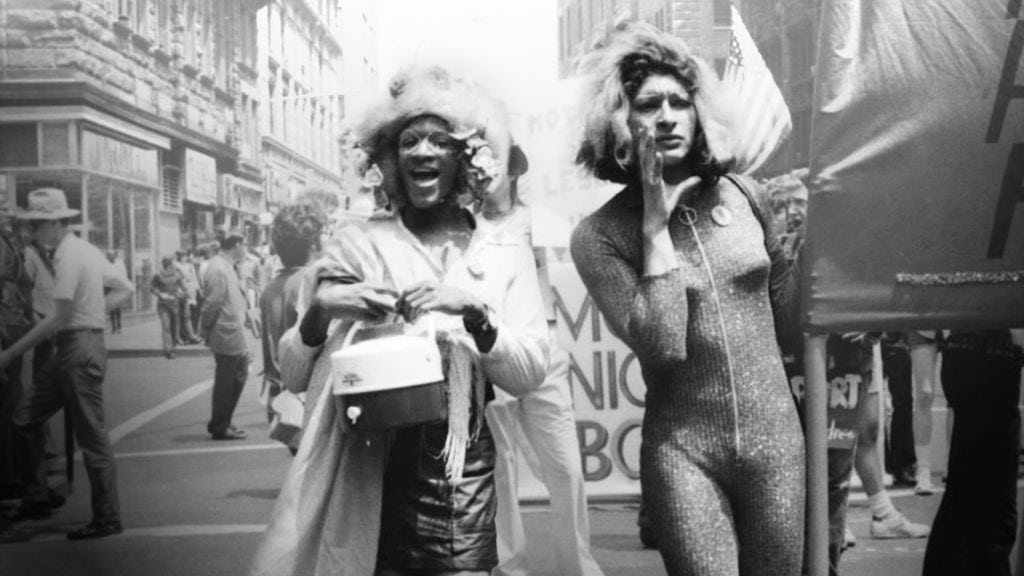Contemporary politics and events have tailored the trends of every era, documenting the mood of society at different periods of time. When World War One led to a rationing of clothing dyes, fashion was placed on a limited spectrum of blues, tans, black, and white. The clandestine and rebellion symptomatic of 1920’s prohibition was translated into clothing, with shorter hemlines, sleeveless dresses, and heavier makeup becoming popular. 1960 brought with it the birth control pill, sexual revolution and, as a result, the mini skirt, while Vivienne Westwood’s iconic era of punk arose out of the social and political unrest of the 70’s. Even today, tracksuits and comfy clothes define the country’s pandemic wardrobe, again proving that styles and trends preserve the time in which they were popular. As Eleanor Lambert once said, “Fashion is history in fabric.”
The evolution of LGBTQ+ activism is, too, measurable by the extent of which popular style has developed over recent years. I don’t mean LGBTQ+ fashion in particular by this – there is no singular queer aesthetic – but, rather, the way in which the mainstream popularisation of certain modern trends mark a society that has drastically shifted its attitudes towards gender, sexuality, and ‘appropriate’ clothing. Fashion is undoubtably becoming less gendered. There is rising demand for unisex clothing lines like COLLUSION and an increase in popularity of male MUA’s such as James Charles or Bretman Rock. Women wearing suits or shaving their heads is today considered cool and stylish, while Harry Styles donning a skirt for his cover on Vogue induced more wide-spread appreciation than controversy. Though they may seem trivial, these trends come off the back of a long history of activism.

Up until 1969, gay rights protests such as The Annual Reminder had a strict dress code: dresses for women, suits and ties for men. Frank Kameny, the event’s organiser, adopted this rule in the hope that the protesters would be perceived as ‘presentable’, and their plea for equality would be taken more seriously as a result. The relationship between fashion and LGBTQ+ activism can be seen explicitly in these early protests; the two are linked because physical appearance has everything to do with public perception. However, the goal of what this public perception should be was significantly changed after the Stonewall riots.
In 1969, police raided The Stonewall Inn, a gay bar in New York City. And, when they became violent towards the patrons inside and began issuing arrests, riots ensued. This uprising against police ended up involving thousands of people and carried on for six days.The monumental events of that week galvanised the LGBTQ+ rights movement, leading to the formation of several activist groups, such as the Gay Liberation Front, Human Rights Campaign, GLAD and PFLAG to name a few.

Stonewall had a long-lasting impact on the lives of LGBTQ+ people, and these changes have been echoed in fashion. Because, while the rioters clothing was not particularly striking (although people were arrested for breaching the ‘gender-appropriate clothing statute’ – cross dressing and drag was literally illegal), these riots triggered the LGBTQ+ community’s move away from public conformity and catalysed the creation of a space in society which permitted true self-expression.
This space came initially in the form of an annual Pride parade, which first took place in New York in 1970 to commemorate Stonewall, with London following suit in 1972. These marches strayed from the dress code of earlier protests, and instead were – and still are – a colourful showcase of individuality and pride. The parade acted as an imagined world of acceptance which is, though we have a long way still to go, now becoming a reality.

Just 700 people attended the first London Pride parade compared to 1.5 million in 2019, and the success of LGBTQ+ activism can be seen even beyond these numbers. The efforts of those first pride-goers have been rewarded with a modern fashion scene which welcomes a huge range of styles and identities. The diversity of fashion today is reflective of changing attitudes and a more open-minded nation. It is true that current trends immortalise the political landscape of every generation, but in the case of LGBTQ+ activism, fashion prefigures this landscape too. Pride parades and mainstream LGBTQ+ representation act as a gateway between clothing and politics. Because, as mirrored in the correlation between the de-gendering of clothing and makeup in recent years and an increasingly wide-spread acceptance of the LGBTQ+ community, fashion that push boundaries implores society to do the same.
The normalisation of trends that were once taboo is owed to the sacrifices and hard work of LGBTQ+ activists. But in turn, these trends continue to generate a shift in wider societal values – making fashion a vessel for change in itself.
Header image: BBC.

